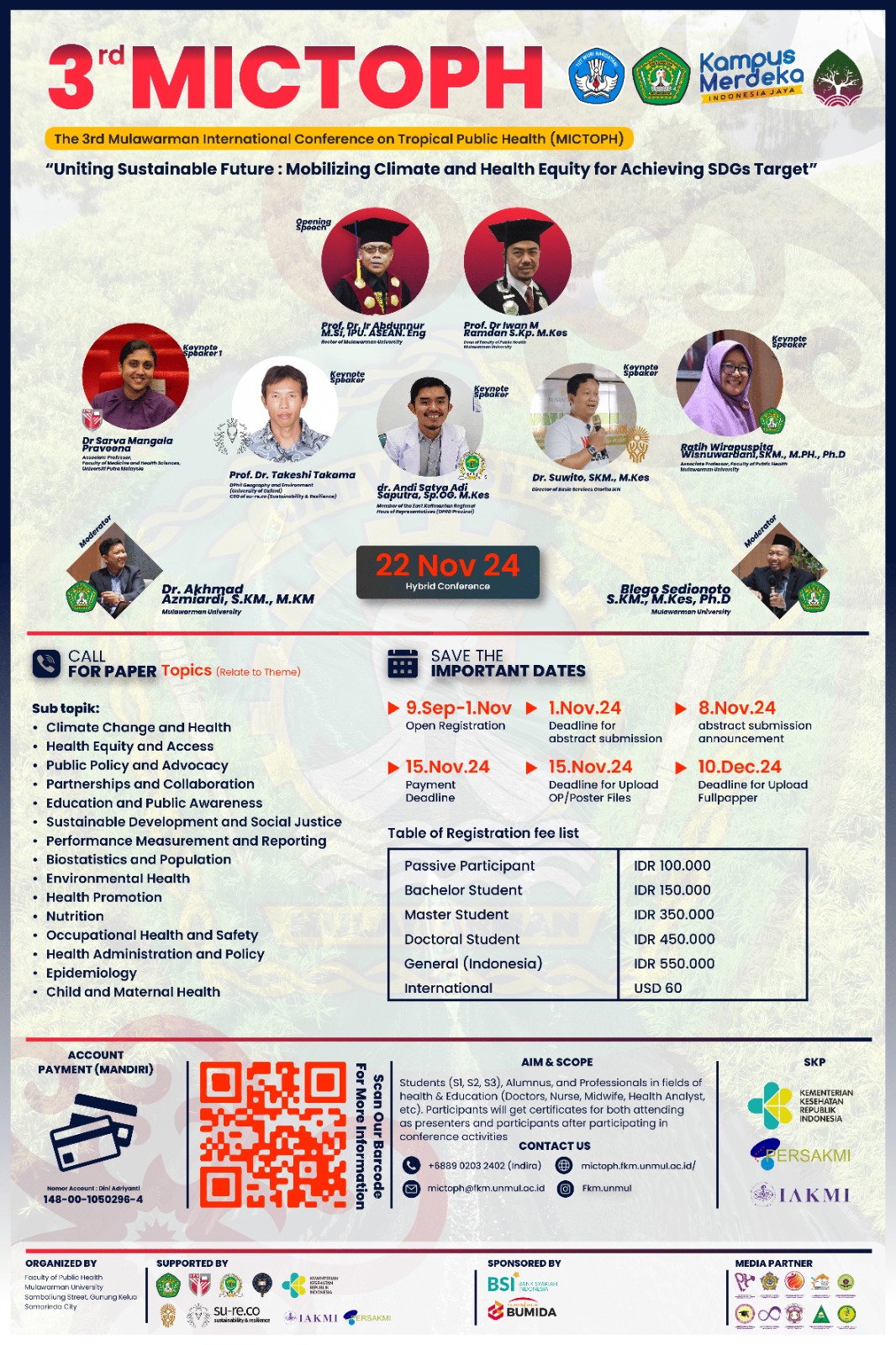Behaviour of Hygiene and Household Sanitation: The Potential Reducing of Strongyloidiasis
Keywords:
HYGIENE AND HOUSEHOLD SANITATION, STRONGYLOIDIASIS REDUCINGAbstract
Background : Environmental in tropical rainforest with warm temperature duo to the increasing risk of strongyloidiasis where low sanitation and personal hygiene of communities. Sebuntal sub-distric, East Kalimantan has an high risk of the infections Objective : This study would be showed the infection rates, the correlation analysis between the risk factors and the prevalence of strongyloidiasis Research Methods/ Implementation Methods : A cross-sectional study was performed among 118 participants from the rural community of Sebuntal sub-district. This study would be showed the infection rates, the correlation analysis between the risk factors and the prevalence of strongyloidiasis had used logistic regression analysis. Kato Katz technique and Koga agar plate culture/KAP culture method were be used in this study for diagnosing of the infections. Results : The infection was found In this study was founded the infection; 16 (13.3%). The high risk of strongyloidiasis were occupation; 2.08 (0.99-4.35), drinking water; 1.99 (1.08-3.69), personal hygiene especially usual foot washing after soil contact 1.26 (1.01-1.58), usual un-cook vegetable 1.27 (0.98-1.63), and wash hand after soil contact1.27 (1.02-1.58) respectively. Conclusion/Lesson Learned : The ecological and social roots of the risk factors that important for preventing the program. The analysis of risk factors important for prevention program





